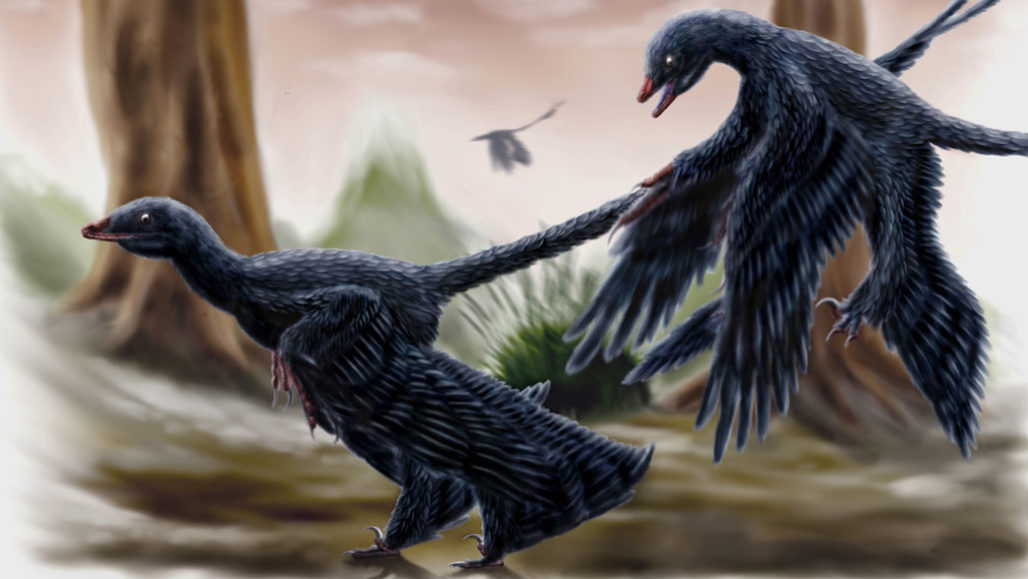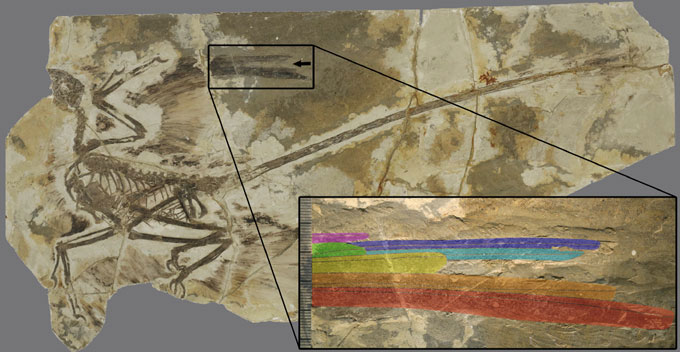This Dinosaur May Have Shed Its Feathers Like Modern Songbirds

The first fossilized signs of sequential molting support the idea that Microraptor was a flyer.
A patch of three oddly short feathers spotted among the fossilized plumage of Microraptor may be the first evidence of a nonbird dinosaur molting. The fossil find further suggests that Microraptor, which lived 120 million years ago, may have shed only a few feathers at a time — just like modern songbirds, researchers report July 15 in Current Biology. Such “sequential molting,” they say, suggests that Microraptor was an adept and frequent flyer.
Unlike many aquatic birds, modern songbirds lose only a few feathers at a time, enabling them to stay aloft year-round for foraging or to escape predators. Microraptor’s shorter feathers appear in just a small patch on one of the dinosaur’s four wings — suggesting that the dinosaur molted sequentially, too, bird ecologist Yosef Kiat at the University of Haifa in Israel and colleagues report.
All modern, adult birds molt at least once a year to replace old, damaged feathers, or to exchange their bright summer colors for drab winter camouflage. Genetic reconstructions of bird lineages have previously suggested that sequential molting has existed in birds for at least 70 million years, and was a trait of the common ancestor of all modern birds. But this is the first fossil evidence of a nonbird dinosaur exhibiting this behavior. Furthermore, the researchers say, the find would push back the estimated origins of sequential molting by 50 million years or so.

Microraptor may have been one of the earliest flyers — depending on how one defines flying. Previous analyses have suggested that the dinosaur didn’t just glide from tree to tree, but was able to launch itself from the ground using its wings and back legs (SN: 10/28/16).
The new find supports this, suggesting “that not only could Microraptor fly, but it could fly well, and [that] flying was an indispensable part of its lifestyle,” says vertebrate paleontologist Steve Brusatte of the University of Edinburgh, who was not involved in the study. That makes Microraptor one of the most convincing cases of a nonbird dinosaur that could fly, Brusatte adds.
CITATIONS
Y. Kiat et al. Sequential molt in a feathered dinosaur and implications for early paravian ecology and locomotion. Current Biology. Published online July 15, 2020. doi: 10.1016/j.cub.2020.06.046.
Source: www.sciencenews.org/








